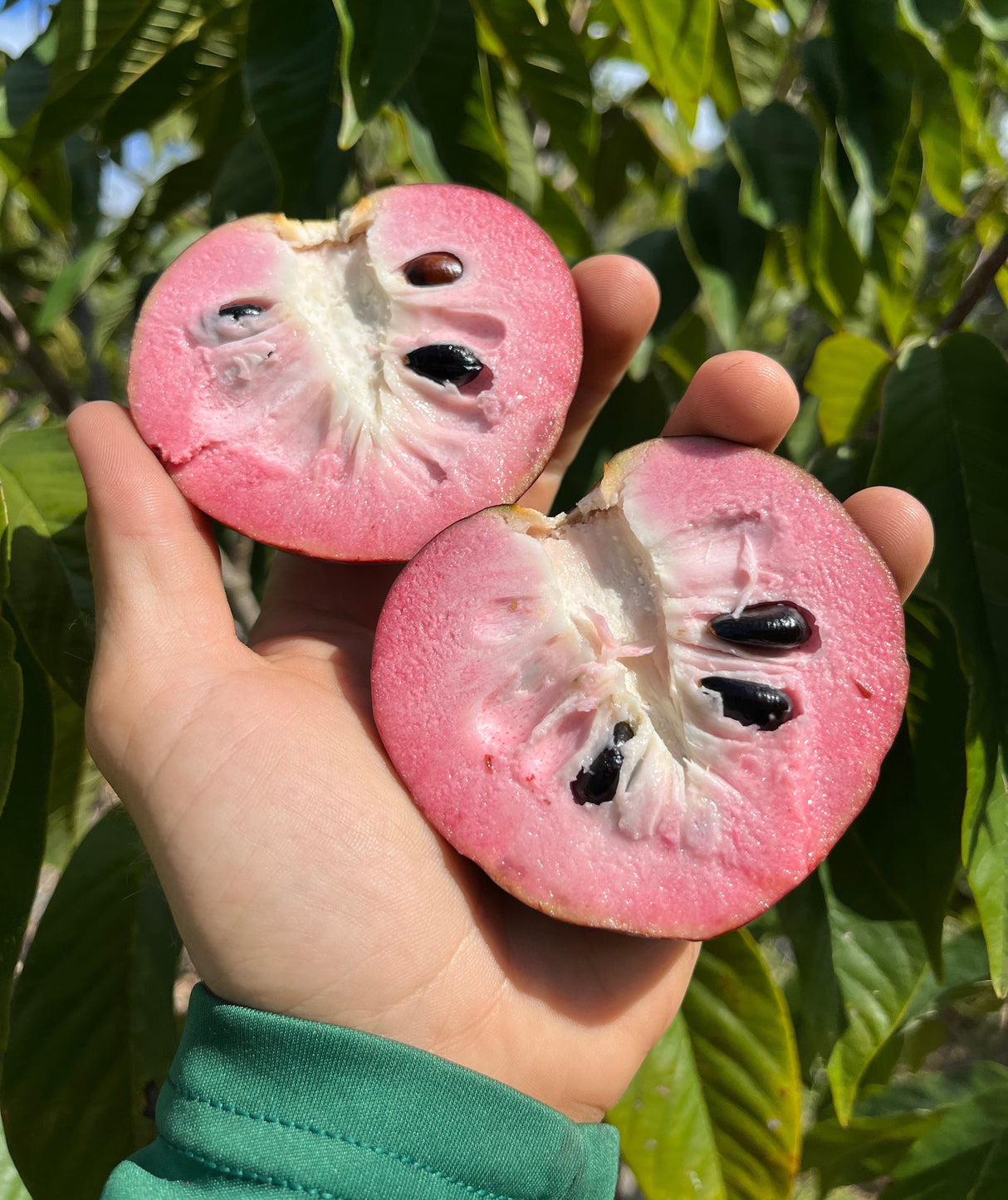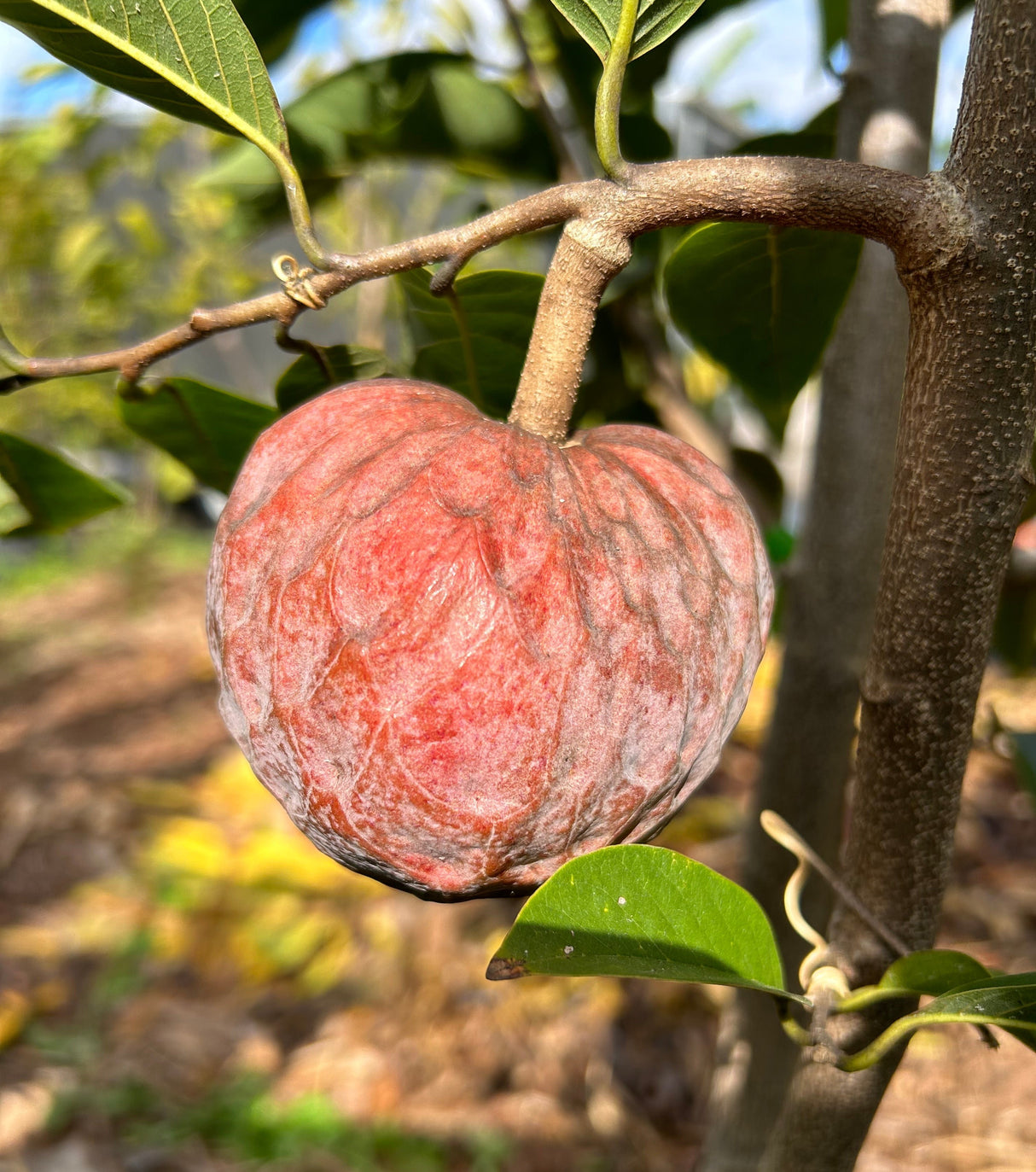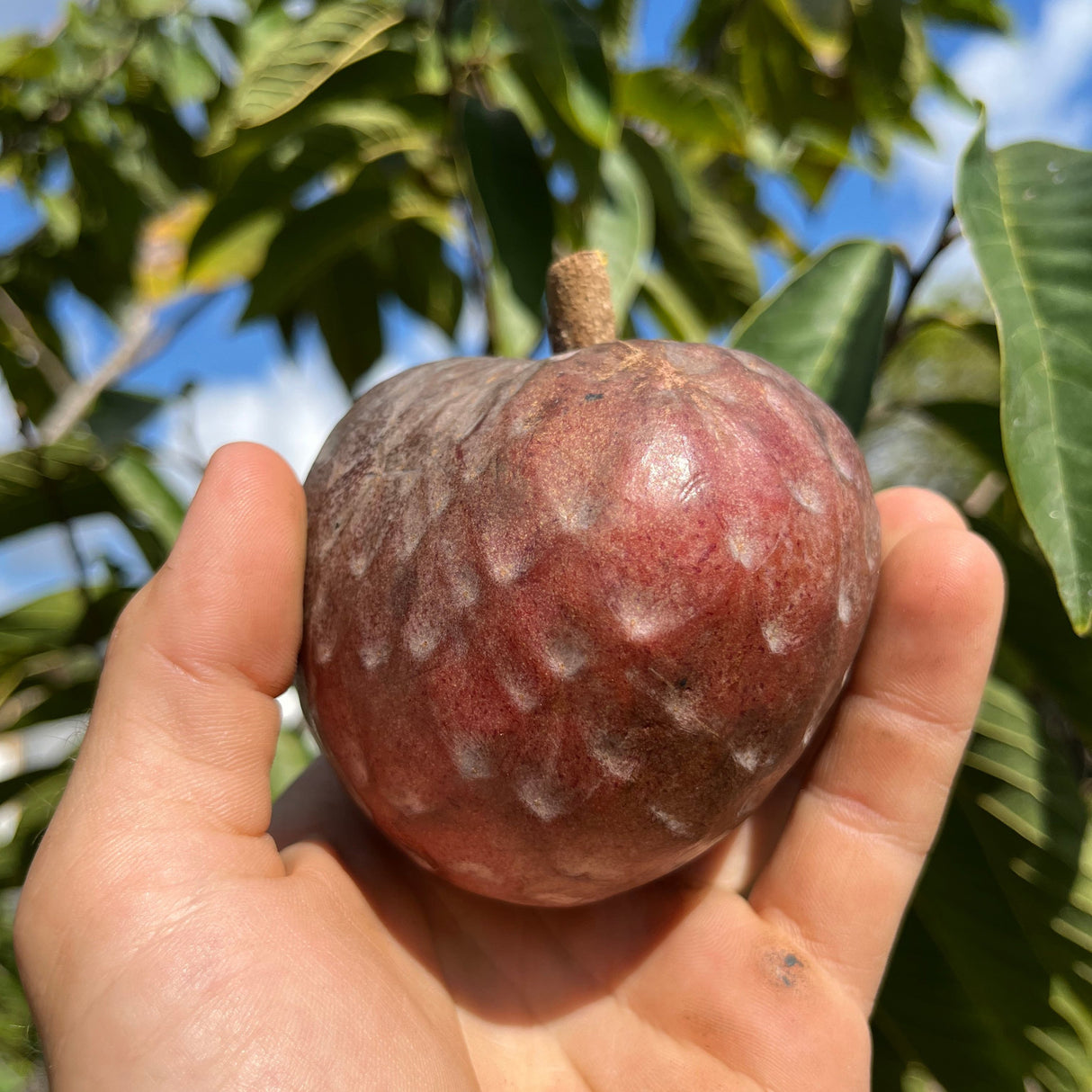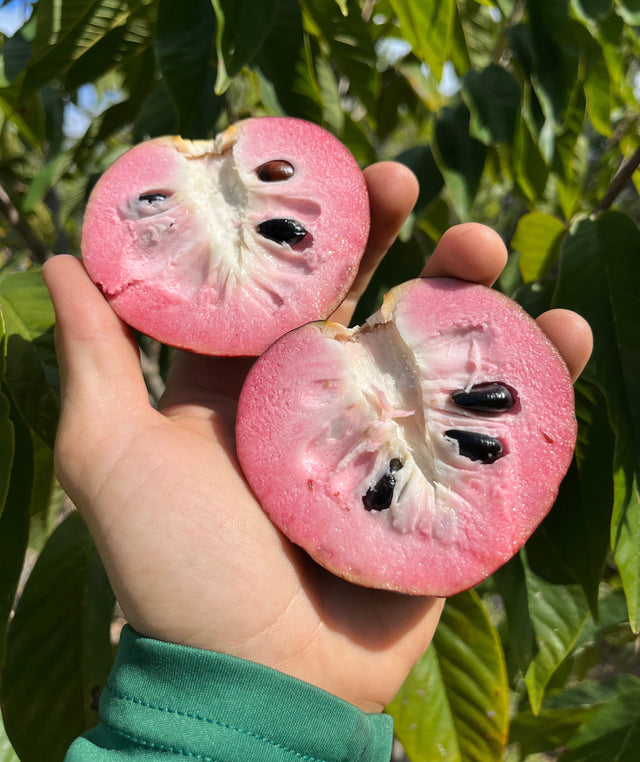Cherilata Tree 'Painter'
Cherilata Tree 'Painter' - 3 Gallon is backordered and will ship as soon as it is back in stock.
Fruit Tree Pot Size Reference Guide
Fruit Tree Pot Size Reference Guide
Display general product information or specific product information using metafields.
We sell grafted fruit trees in various sizes, ranging from young 3-gallon plants all the way up to 25-gallon and larger, mature trees.
As a general rule of thumb, here’s what you can expect from each size:
3 gallon: Will take an average of 2-3 years before harvesting your first crop. Trees are small and may be just a single stem, or just starting to develop their first branches. Typical height is between 2-4 feet.
7 gallon: Will take an average of 1–2 years to produce a crop. Branching structure has started to develop, and trunks are between ½ to 1 inch thick. Typical height is between 3-6 feet.
15 gallon: You can usually expect fruit within a year of planting, and some trees are already fruiting at this size. Branch and canopy structure has taken shape and the tree is starting to grow wider. Trunks are between 1 to 1-½ inches thick. Typical height is 5-8 feet.
25 gallon and larger: These are mature trees, and most are ready to produce fruit or have already produced. They have been pruned and shaped multiple times at this point. Trunks are about 2” thick or larger. Typical height is 6-10 ft.
PLEASE NOTE: These descriptions are generalized - Some species of fruit trees are very quick to produce, and others take longer. For example, mulberry trees can start fruiting at a very young age, even as small as a 3 gallon. Mango, avocado, or sapodilla trees will take longer. Each species grows at a different rate and will take varying lengths of time to establish, and even different cultivars can be more precocious (quick to produce) than others.
Order Pick Up/Delivery Info
Order Pick Up/Delivery Info
When you select the “Nursery Pickup” option at checkout, please allow up to 24-48 hours for your order to be prepared for pickup. Once your order is ready for pickup, we will email you to let you know that it is ready. Plant orders may be held at the nursery for up to 10 days. If orders are not picked up within this time frame, a 15% restocking fee will be charged. If you are unable to pick up your order, please contact us to request a quote for delivery.
If you prefer to have us deliver your plants, select "Ship" at checkout and choose the "Local Delivery" option. (This option will not be visible if your order is below the $300 minimum for delivery). Delivery cost for orders within 20 miles is a flat rate of $50. If your address is further than 20 miles, we will invoice you for the additional mileage at $3/mile upon fulfilling your order. Deliveries are typically scheduled on Tuesdays and Wednesdays. Please include your phone number and any delivery instructions in the order notes.
Responsibility of Care
Responsibility of Care
Return Policy
Return Policy
All sales are final at the time of payment. Please be sure that you are happy with your order before submitting. Returns or exchanges will only be made under exceptional circumstances, at our discretion, and are subject to a 15% restocking fee. Once plants have left the nursery and are no longer in our care, they cannot be returned.
Inventory Disclaimer
Inventory Disclaimer
Every day, we take great care to maintain our inventory and make real-time updates as plants come and go. Because our inventory is constantly changing, and because in-store and online purchases are being made simultaneously, it is possible for a short window to occur when an item is physically sold out, but listed as in-stock on this platform. This is rare, but in the case that it does happen, we will contact you right away and either refund the item or offer an alternative. Thank you for your understanding!
Additionally, we add new plants to the nursery on a weekly, sometimes daily basis. Check back often to see what’s in stock, and click the “Notify me when this item is available” button to get updates when your wish-list items are restocked!
Description
Description
Latin name - Cherimoya x reticulata
The Cherilata is an Annona hybrid fruit whose name is derived from it’s two parents: the Cherimoya, and the custard apple (Annona reticulata). It is a wonderful new development in Annona breeding and hybridization, exhibiting the best qualities of both parents - Sweet, decadent berries-and-cream flavor like a custard apple, with the superb firmness and chewy texture of a cherimoya. Further, due to its reticulata parentage, it is easily adaptable to south Florida’s climate and is mostly evergreen, with a vigorous upright growth pattern. The particular Cherilata that we grow was hybridized by John Painter of Bokeelia, FL in the early 90’s, thus the cultivar has been named “Painter”.
The Cherilata fruit is generally a rounded shape, usually the size of a baseball but sometimes up to softball size. The outer skin is thin and a deep maroon color, brightening up a bit when ripe. The inside flesh is white and magenta colored, with a firm texture that melts in your mouth when eaten. When describing the taste of a red custard apple, I simply say “raspberry cheesecake”– Cherilata fruit is nearly the same, but the berry flavor seems more concentrated and the texture is firmer. They are ready to eat when the skin has a slight softness to it and the fruit can be easily split open by hand. Cherilata fruit can ripen either in late summer/early fall, or in early spring.
We have planted Cherilata trees grafted onto both cherimoya and pond apple (A. glabra) rootstocks, and have noted slightly different results between the two. The pond apple rootstock clearly produces more vigorous growth, and is capable of thriving in wetter soil conditions, but seems to be shy when it comes to bearing fruit. In contrast, the cherimoya rootstock produces a slightly slower-growing tree, which for us has been much more willing to flower and produce fruit even at a young age. There is some evidence of the Cherilata tree being partially incompatible with pond apple rootstock, which can potentially cause graft failure well after the tree has already been established. Because of this, we see cherimoya as the most ideal rootstock, but trees grafted on pond apple are appealing for those who wish to plant their tree in a swampy area.
___________________________________________________________________________
Size: 8-10’ wide x 12-15’ tall, with pruning
Sun Requirements: Full sun
Cold Hardy: 28 degrees
Harvest Season: Late summer-fall, sometimes spring
Watering requirements: Fairly drought tolerant once established
Food Forest Layer: Canopy, Understory





